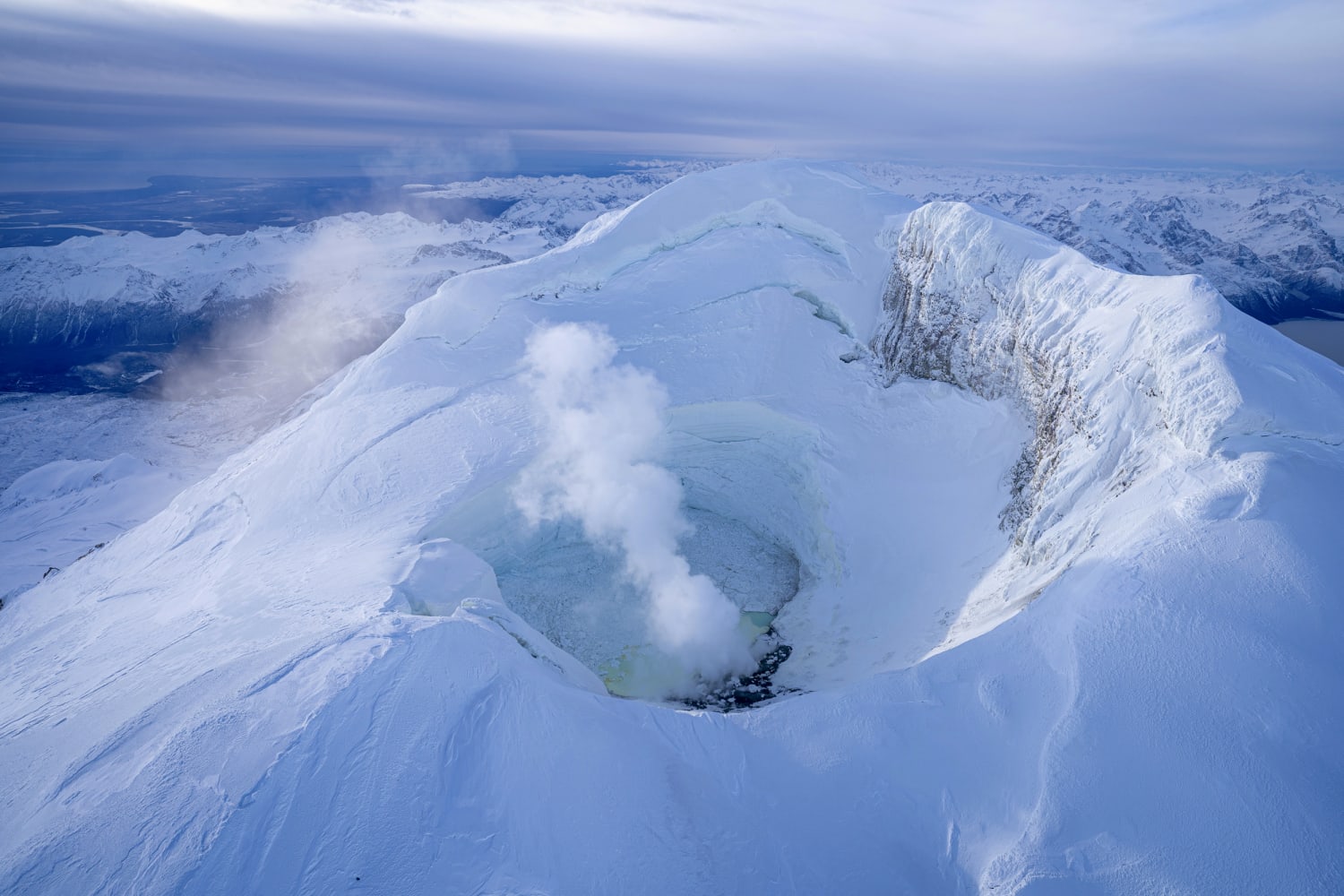Mount Spurr Volcano
Mount Spurr, situated near Anchorage, Alaska, is currently under scrutiny due to increased volcanic activity. A recent swarm of earthquakes has raised alarms among scientists and residents alike. The Alaska Volcano Observatory (AVO) has reported over 50 seismic events in just one week, indicating magma movement beneath the volcano. This activity suggests a potential eruption could be on the horizon, prompting the city of Anchorage to prepare for possible ash clouds and other volcanic hazards.
Key Facts About Mount Spurr
- Mount Spurr is the highest volcano in the Aleutian Arc, located 130 km west of Anchorage, Alaska, near Chakachamna Lake.
- Type: It is a stratovolcano (or stratocone) with a large horseshoe-shaped caldera about 5 km wide, open to the south.
- Formation of the Caldera:
- Formed during the late Pleistocene or early Holocene
- Result of a massive volcanic collapse and pyroclastic flows that destroyed the older volcano.
- The debris from this collapse travelled 25 km
- Some debris blocks were as large as 100 meters.
- Post-Caldera Features
- Several ice-carved domes formed inside the caldera after the collapse.
- Mount Spurr itself is the highest of these domes.
- A heating event in 2004 created a small crater lake at the summit.
- By 2008, the crater cooled and started accumulating snow again.
- Crater Peak (Younger Dome):
- Located 2 km south of Spurr, at the southern breach of the caldera.
- Elevation: 2,309 meters (7,575 feet).
- Responsible for about 40 volcanic ash layers (tephra) found from the Holocene period.
- Historical Eruptions:
- Erupted twice in recorded history: 1953 and 1992, both from Crater Peak.
- These eruptions caused ashfall in Anchorage.
Historical Context
The last eruption of Mount Spurr occurred in 1992. This event produced an ash cloud that disrupted air travel and blanketed parts of Anchorage. Experts warn that if an eruption occurs now, it may be even more explosive. Predictions suggest plumes of volcanic ash could reach heights of 50,000 feet, creating massive clouds that could darken the skies over Anchorage.
Scientific Observations
The AVO has noted several signs of unrest at Mount Spurr. Elevated gas emissions and ground deformation are clear indicators of internal pressure. Although recent satellite monitoring has been hampered by cloudy skies, the increase in seismic activity is a concerning trend. The frequency of earthquakes has surged dramatically since April 2024, indicating that the volcano may be preparing for eruption.
Month: Current Affairs - April, 2025
Category: Environment Current Affairs








